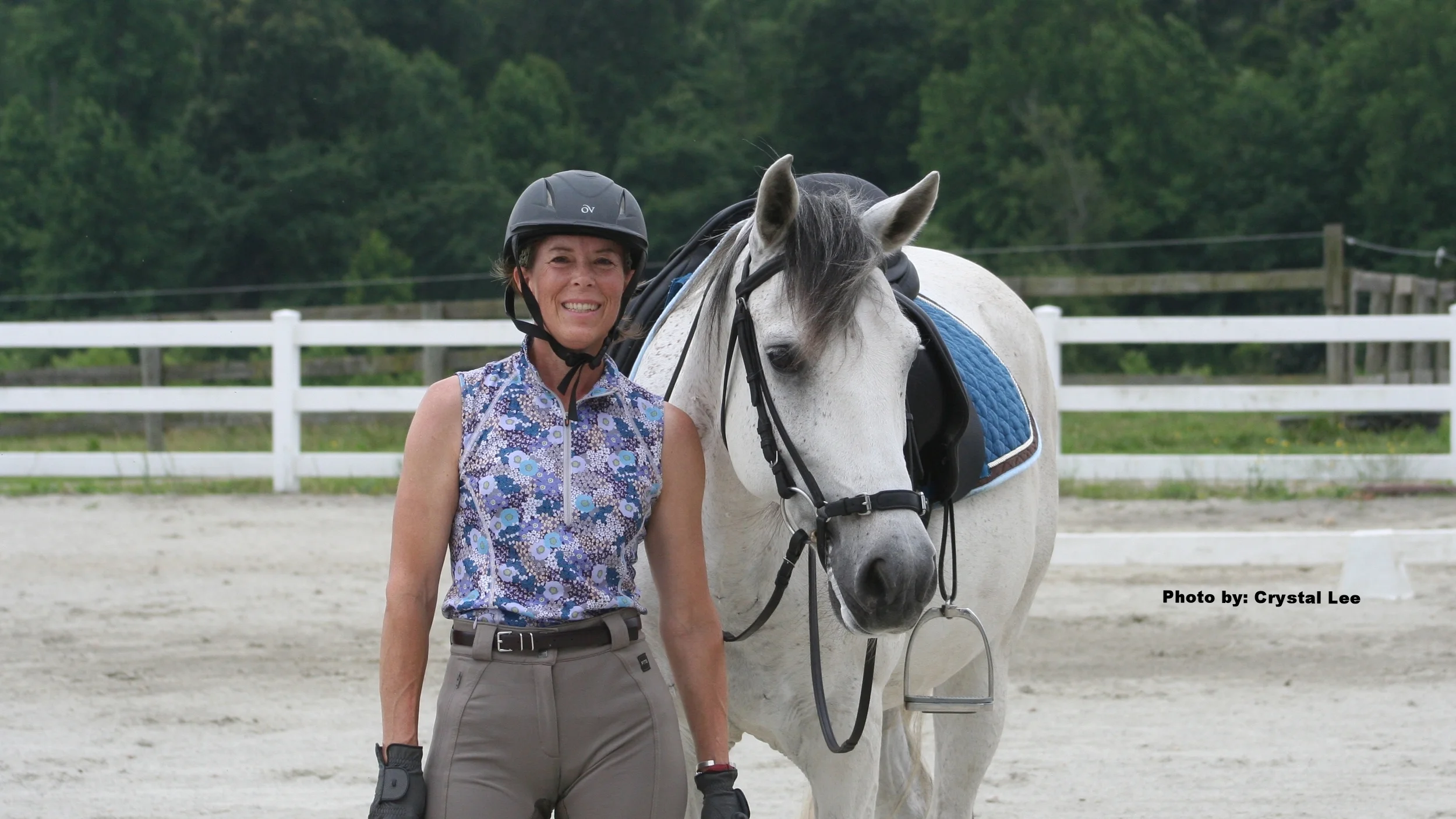Monday Morning Ride & Friday Reflection
/Self-discovery. Be a frog.
My instructor has told me over and over again to use my lower leg in half-pass. My instructor has explained how to use my lower leg. My instructor has put her hands on my lower leg and pushed it against the horse to manually illustrate how much pressure I need with my lower leg. And yet, for some reason, although I thought I was using my lower leg – I was not. How do I know? I didn’t – not until I had my moment of self-discovery this morning.
This precise moment in time was evolving before this morning’s ride. I have been working on making the transition from whip to spur, so that I can compete at Prix St. George. Taking away my whip made me aware of how much I depended on using it vs. using my leg. My whip had gone from being a tool of reinforcement to being my leg aid. Basically whenever I did a half-pass, I used my whip to some degree. When my whip was taken away I lost my range of sideways travel and forward motion until I was practically dribbling at the end of the movement. When I tried to use more leg, my upper body contorted in a most unattractive and ineffective manner.
This morning I was determined to use my aids correctly in my half-pass without my whip. I decided to be like a frog; I literally took my outside thigh away from the saddle in a highly exaggerated release of leg, and at the same time, I pressed my lower leg firmly against my horse’s side and – WOW! I actually felt my lower leg make contact with my horse’s side, I actually felt myself press, and I actually felt the movement of his hind leg crossing over sideways as a response! I practically fell off my horse as I hugged him from the saddle, laughing and crying at the same time. Over-reaction on my part? Nope. This was an amazing self-discovery. Yes, I have been doing half-pass for years now. But this was the literally the first time I physically really got my thigh and my lower leg completely separated in the half-pass, which meant I did: a) not grip with my outside thigh b) not contort my upper body c) not lock my hips d) not use a whip and e) my horse traveled sideways without loss of impulsion and tempo off my outside lower leg.
It is Friday. Since this moment of self-discovery on Monday, I now have the ability to tell when I am blocking my horse with my upper thighs, which has become useful in the half-pass at trot and canter, in my flying changes, my extended canter, and my canter pirouettes. I also gave my instructor a useful tool because she now yells at me “loose thighs,” “unlock your thighs,” and “stop gripping.” Her instructions aren’t new, but my ability to detect and make a correct change is a newly mastered skill. After a week of practicing, I can more easily release the tension that sticks my thigh against the saddle. And if I get stuck again while executing a movement, I now have a strategy to unlock my thigh and use my lower leg.
The teacher part of me wants to explain more . . . If you want to know how I did physically did this, read on:
First of all, it is important to understand that I literally could not get my lower leg pressed firmly against my horse’s side in the half-pass because my upper thigh was firmly pressed against the saddle and with the horse’s body bent around my inside lower leg and me attempting to also step into my inside stirrup, my outside lower leg actually had air space between it and the side of my horse. Previously, in order to use my lower leg, I often moved it too far back and up the horse’s side to make contact and I also used my whip to compensate for when I did not make contact with my lower leg.
What I physically did at my moment of self-discovery was to make myself bow-legged; I literally picked up my outside leg from the hip and put air between my thigh and the saddle while moving my lower leg inwards.
I just stood up and practiced this movement in order to figure out what I did in the saddle. Practice having frog legs. Stand on your left leg and stick your right leg out in the air like a frog and from the knee swing your lower leg out and in. That is what I did on the horse.
Clearly, you do not want to ride with your thigh in the air, but I seem to always need to highly exaggerate things in the beginning to really feel them. After that, I can refine the movement.
Writing this blog has made me realize how effective photos would be to illustrate my point. My goal is to have my blog evolve and include photos and video.
Thanks for reading – I hope I made a connection! Ride forth like a frog.
